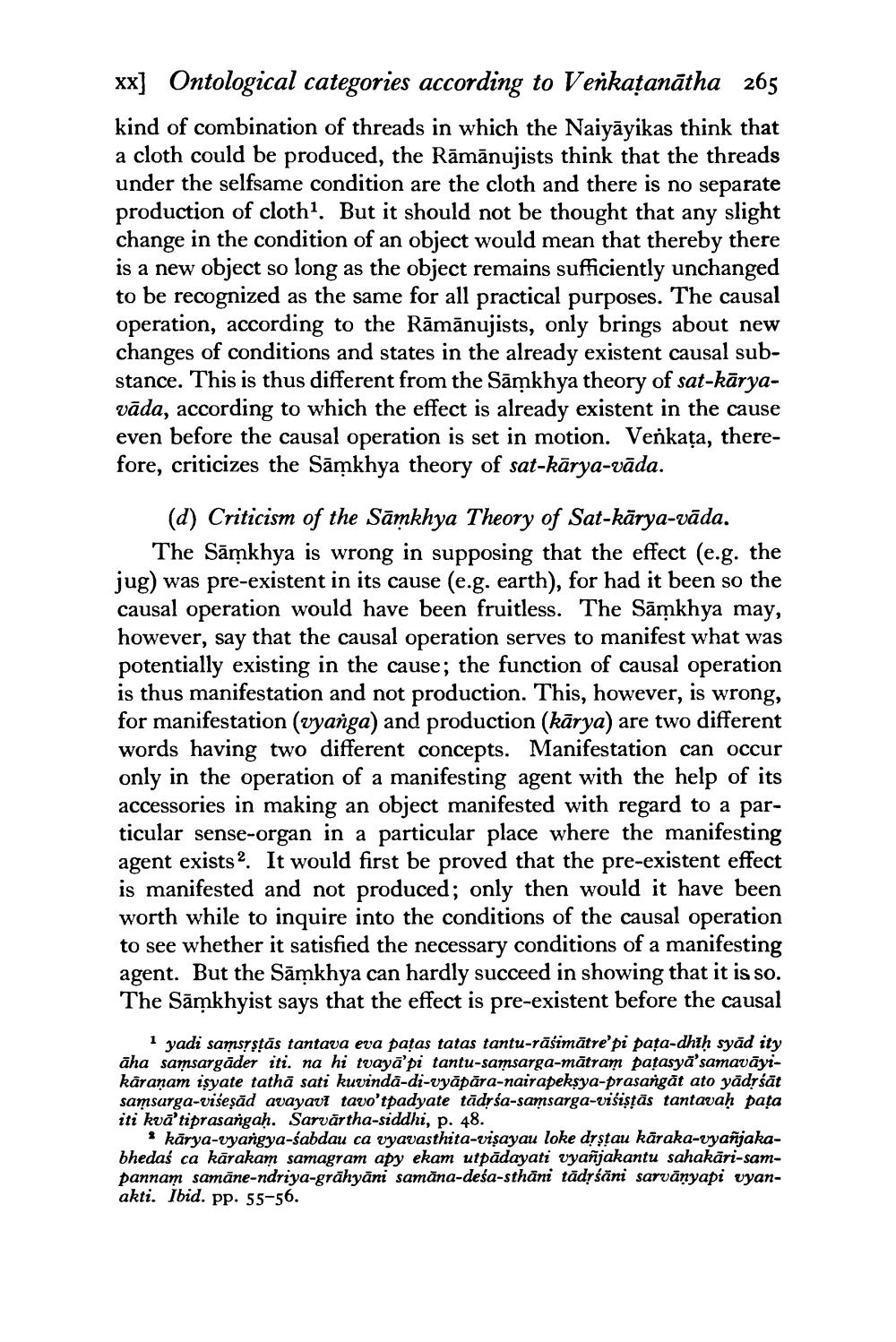________________
xx] Ontological categories according to Venkațanātha 265 kind of combination of threads in which the Naiyāyikas think that a cloth could be produced, the Rāmānujists think that the threads under the selfsame condition are the cloth and there is no separate production of cloth". But it should not be thought that any slight change in the condition of an object would mean that thereby there is a new object so long as the object remains sufficiently unchanged to be recognized as the same for all practical purposes. The causal operation, according to the Rāmānujists, only brings about new changes of conditions and states in the already existent causal substance. This is thus different from the Sāmkhya theory of sat-kāryavāda, according to which the effect is already existent in the cause even before the causal operation is set in motion. Venkata, therefore, criticizes the Sāmkhya theory of sat-kārya-vāda.
(d) Criticism of the Sāmkhya Theory of Sat-kārya-vāda.
The Sāmkhya is wrong in supposing that the effect (e.g. the jug) was pre-existent in its cause (e.g. earth), for had it been so the causal operation would have been fruitless. The Sāmkhya may, however, say that the causal operation serves to manifest what was potentially existing in the cause; the function of causal operation is thus manifestation and not production. This, however, is wrong, for manifestation (vyañga) and production (kārya) are two different words having two different concepts. Manifestation can occur only in the operation of a manifesting agent with the help of its accessories in making an object manifested with regard to a particular sense-organ in a particular place where the manifesting agent exists?. It would first be proved that the pre-existent effect is manifested and not produced; only then would it have been worth while to inquire into the conditions of the causal operation to see whether it satisfied the necessary conditions of a manifesting agent. But the Sāmkhya can hardly succeed in showing that it is so. The Sāmkhyist says that the effect is pre-existent before the causal
1 yadi samsīstās tantava eva patas tatas tantu-rāśimātre'pi pața-dhiḥ syād ity āha samsargāder iti. na hi tvayā'pi tantu-samsarga-mātram patasyā'samavāyikāranam isyate tathā sati kuvindā-di-vyāpāra-nairapeksya-prasargāt ato yādrśāt samsarga-viseşād avayavi tavo'tpadyate tādrśa-samsarga-visiştās tantavaḥ pața iti kvā'tiprasangaḥ. Sarvartha-siddhi, p. 48.
* kārya-vyangya-sabdau ca vyavasthita-visayau loke drştau kāraka-vyañjakabhedaś ca kārakam samagram apy ekam utpădayati vyañjakantu sahakāri-sampannam samāne-ndriya-grāhyāni samāna-deśa-sthāni tādyśāni sarvāṇyapi vyanakti. Ibid. pp. 55-56.




